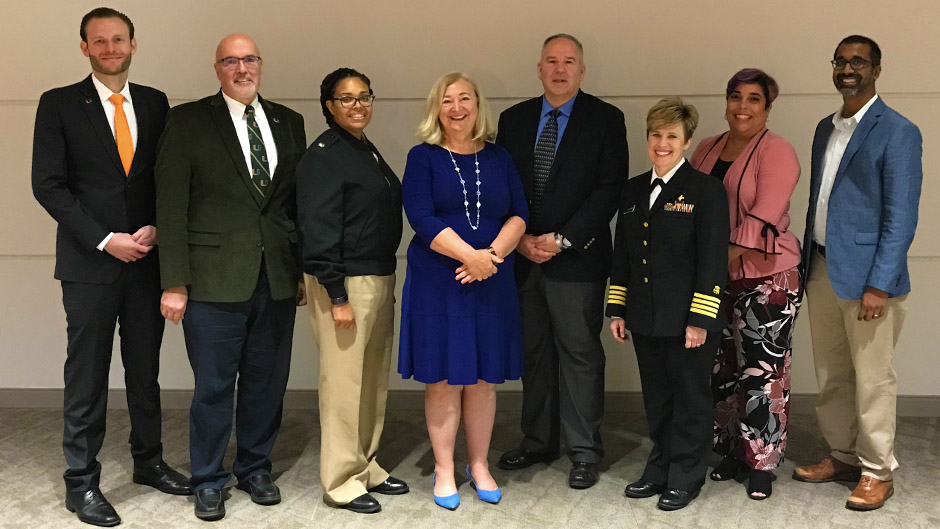With its mosquitoes and hurricanes, international tourists and vulnerable populations, South Florida represents a nexus of opportunity for natural disasters and infectious disease. On Monday, October 1, Cindy L. Munro, dean and professor at the School of Nursing and Health Studies, welcomed more than 50 attendees to the SONHS Simulation Hospital Auditorium for the second Annual Simulation Hospital Symposium: Preparing and Responding to Disasters.
“One year ago we opened this hospital with a symposium that was focused on disaster preparedness,” said Munro. “This is the follow-up symposium. It is our hope to continue to do annual symposia based on a theme.”
The 2018 symposium added infectious disease to the lineup. The first panel, “Healthcare Infection Prevention and Control,” moderated by Vice Dean John Clochesy, was presented by speakers from the Centers from Disease Control and Prevention’s Division of Healthcare Quality Promotion. Sujan Reddy, medical director for the CDC Prevention Epicenters Program, and Captain Amy Valderrama, a nurse epidemiologist for the Consultation and Training Team, discussed the latest training and research strategies being implemented by the CDC at the local and global level to address gaps in infection control and prevention in the United States.
In the second panel, “Emergency Response: Global & Local,” Commander Maleeka Glover, director of the CDC Medical Investigations Team, discussed her role on the CDC’s response to the 2014 Ebola virus outbreak in West Africa, in particular after the first U.S. case of Ebola was diagnosed in Dallas, Texas, in September 2014. She explained that the team she now leads was created as a result of lessons learned from the 2014 Ebola response. She said Hurricane Katrina in 2005 was another watershed moment for the agency, noting that the CDC now uses a vulnerability index to identify the needs of a given community’s most physically and economically vulnerable residents in the event of a major incident. Credible, cross-agency communication and collaboration, as well as cultural competency, play critical roles in engendering trust and credibility throughout an emergency response, noted Glover.
Sharing a panel with Glover, Matthew Shpiner, director of Emergency Management at the University of Miami, shared how UM has used simulation training to develop and test its disaster preparedness and response strategies, and how those strategies have played out in real-life incidents, from last year’s Hurricane Irma evacuation to the Zika virus outbreak. “We need to select exercises that help us validate the capabilities we’re trying to test,” he explained. “It’s about coming together to find ways to solve these problems. We don’t want to be living in a fairy tale.”
Closing out the symposium was a presentation on the hemispheric impact of the Simulation Hospital. Faculty leaders from the International Academy for Clinical Simulation Research at the Simulation Hospital—Jeffrey Groom, Susana Barroso-Fernandez, and Nichole Crenshaw—talked about the education and research collaborations, technology, and consultations taking place every day, adding that interest has been significant, with over 500 tours of the new facility conducted in one year.

